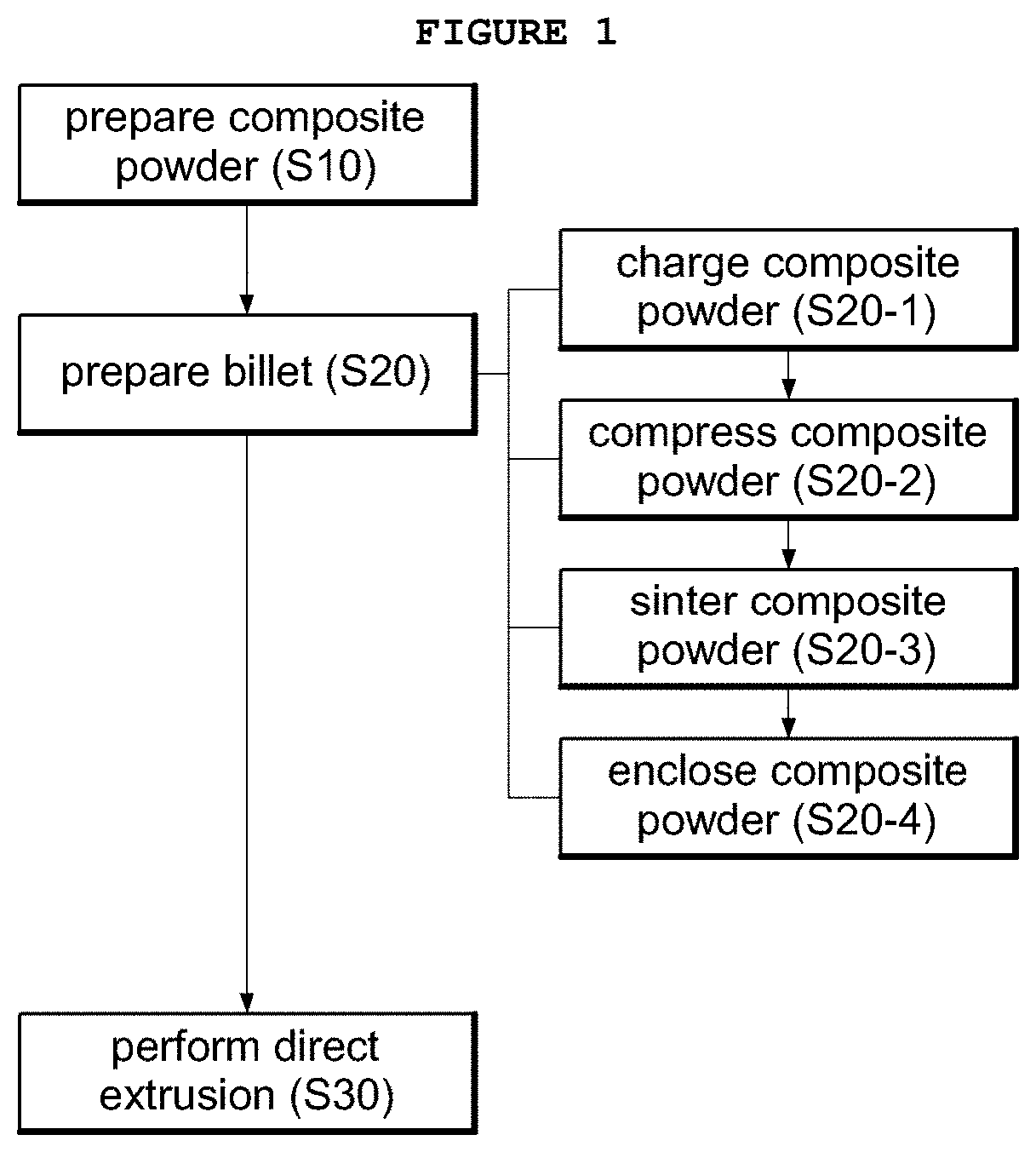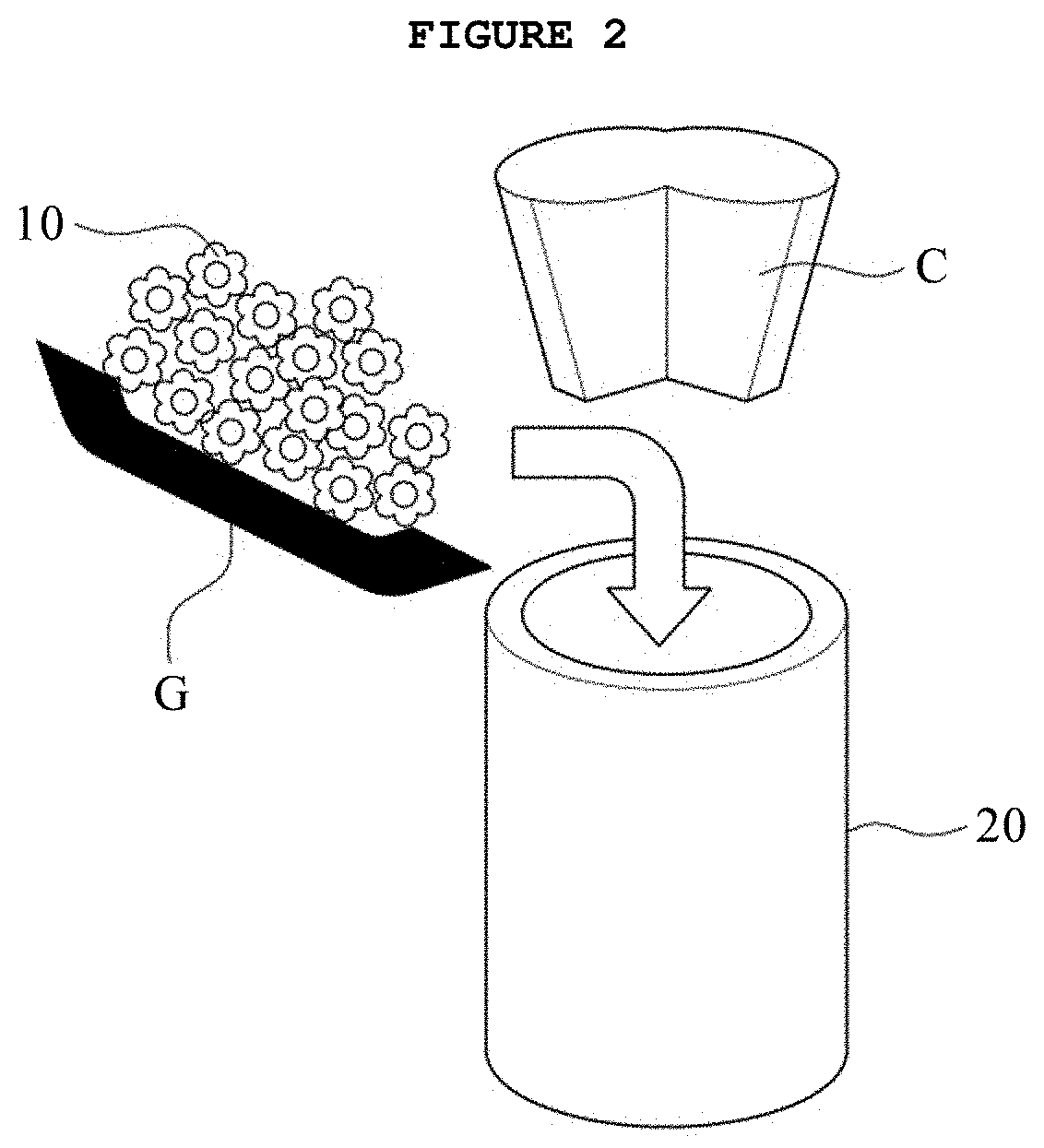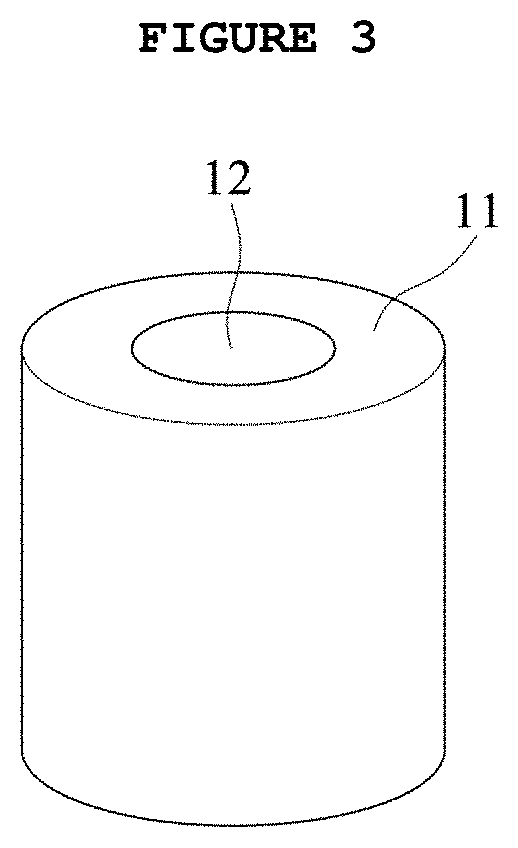Method of manufacturing aluminum-based clad heat sink, and aluminum-based clad heat sink manufactured thereby
a technology of heat sink and aluminum clad, which is applied in the direction of layered products, basic electric elements, chemical instruments and processes, etc., can solve the problems of relatively mechanical and physical weak, and large amount of heat generated by electronic parts, so as to achieve the effect of simple process procedure and competitive advantage in pri
- Summary
- Abstract
- Description
- Claims
- Application Information
AI Technical Summary
Benefits of technology
Problems solved by technology
Method used
Image
Examples
example 1
[0087]Carbon nanotubes (manufactured by SCSiAl headquartered in Luxembourg) having a purity of 99.5%, a diameter of 10 nm or less, and a length of 30 μm or less were used. Aluminum powder (manufactured by MetalPlayer headquartered in Korea) having an average particle size of 45 μm and a purity of 99.8% was used.
[0088]A multi-layered billet was manufactured such that a third billet having a columnar shape was positioned at the center of a metal can serving as a first billet and a second billet (composite powder) was positioned between the first billet and the third billet.
[0089]The second billet included aluminum-CNT composite powder containing 0.1 part by volume of the carbon nanotube with respect to 100 parts by volume of the aluminum powder. The first billet was made of aluminum 6063, and the third billet was made of aluminum 3003.
[0090]The second billet was manufactured in manner described below. 100 parts by volume of the aluminum powder and 0.1 parts by volume of the carbon nan...
example 2
[0093]In the same manner as in Example 1, an aluminum-CNT composite powder containing the carbon nanotubes in a content of 1 part by volume was prepared and a multi-layered billet was prepared by using the composite powder.
[0094]The prepared multi-layered billet was directly extruded under the same conditions as in Example 1 to produce an aluminum-based clad heat sink of straight fin type.
example 3
[0095]In the same manner as in Example 1, an aluminum-CNT composite powder containing the carbon nanotubes in a content of 3 parts by volume was prepared and a multi-layered billet was prepared by using the composite powder.
[0096]The prepared multi-layered billet was directly extruded under the same conditions as in Example 1 to produce an aluminum-based clad heat sink of straight fin type.
PUM
| Property | Measurement | Unit |
|---|---|---|
| pressure | aaaaa | aaaaa |
| temperature | aaaaa | aaaaa |
| pressure | aaaaa | aaaaa |
Abstract
Description
Claims
Application Information
 Login to View More
Login to View More - R&D
- Intellectual Property
- Life Sciences
- Materials
- Tech Scout
- Unparalleled Data Quality
- Higher Quality Content
- 60% Fewer Hallucinations
Browse by: Latest US Patents, China's latest patents, Technical Efficacy Thesaurus, Application Domain, Technology Topic, Popular Technical Reports.
© 2025 PatSnap. All rights reserved.Legal|Privacy policy|Modern Slavery Act Transparency Statement|Sitemap|About US| Contact US: help@patsnap.com



